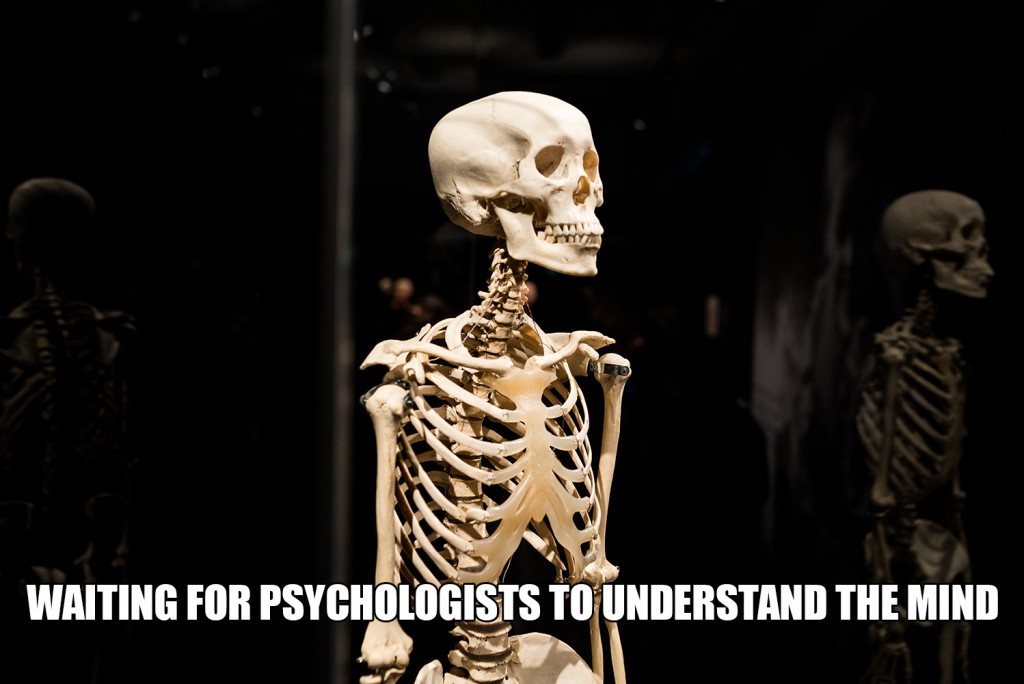
Foto: Christoffer A. Rasmussen // Wikimedia Commons https://commons.wikimedia.org/wiki/File:Fugle,_ørnsø_073.jpg
Skrevet av: Hans Fredrik Sunde
There are no sciences, only science. Physics and physiology are just different branches on the same scientific tree of knowledge. Some fields are branching towards the sky, others are closer to the roots. The integrity of each field depends on the one beneath it. More practically: To understand culture one must understand the mind. Culture is the interaction of minds. If you remove the minds, culture vanishes.
Culture is of course more than the sum of minds, but it is still the product of minds. Just like flocking birds and shoaling fish, cultures cannot be fully understood unless one understands the rules of the individual. There is no central coordination that results in a flock of birds behaving as one unit. Rather, each individual follows relatively simple rules. In the case of birds, there are only three simple rules: Don’t crash into your neighbours, fly in the same general direction as your neighbours, and fly towards the average position of your neighbours[1]. Voila! The result is an epiphenomenon that – some could argue – is more fascinating and complex than the individual bird[2]. But wait, you may think: Doesn’t culture have central coordination? We have churches and governments, religions and ideologies, agents that steer culture. Doesn’t this invalidate my analogy? This line of thinking is compelling, but alas, fallacious. While there isn’t one single mind that drives these powers of civilisations, they too are the product of minds. Neither countries, corporations, nor religions exist but in the minds of people. Thus, it all comes down to minds creating and dealing with these intersubjective, imaginary entities, as well as minds dealing with other minds, and finally minds dealing with physical reality. This is true for the invisible hand of the market, the spawning of social movements, and human history in general. Minds, minds, minds!
Unlike flocks of birds, cultures appear to differ substantially[3]. This is because the human mind is much more complex than that of birds (or at least we like to think so). We do not follow only a few simple rules, but rather a complex and interconnected web of rules. Furthermore, there are individual differences between minds, where different rules are differently emphasised. The result is variation galore. To understand something of varying nature, like cultures, one must know the anchoring point of the pendulum. The anchoring point may be vague and un-fixed, but without having a general idea of where this point is, attempting to understand culture is a lost cause. It is like walking in the wilderness without map or compass. You may think you know where you are, but do you really? Psychologists are the cartographers to the land of culture.
If other social scientists should wait for an accurate map before they laid out on their quest to understand culture, they would have to wait for quite some time. They might as well do some educated guesses meanwhile. But when more accurate maps are published from the psychology department, other social scientists must adjust their theories accordingly. Note, however, that because we lack a grand and coherent neuropsychological theory, psychologists are also just guessing educatedly. When more accurate maps come from the neuroscience department, they too must adjust their theories. (After all, how else shall we know the anchoring point of variation between individuals?). This hierarchy continues all the way down to the physics department: You cannot have a theory of psychology that contradicts the laws of physics[4]. Or, to put it another way, the maps (or theories) further down the tree of knowledge must be added as premises to maps further up.
The maps of chemistry and physics are analogous to satellite photos. They are precise and detailed, and are unlikely to be updated anytime soon in a way that affect other fields. Further up the tree, the maps of biology are also quite good, and the theory of evolution is a helpful compass. In fact, all psychology is in principle evolutionary psychology. Proposing a psychological theory incompatible with the evolutionary premise would be an extraordinary claim, and would require extraordinary evidence. The contemporary maps of neuroscience and especially psychology itself are still inaccurate or undetailed, and some are even straight out wrong. With a lack of definite premises, many of the maps further up the tree are, well, questionable. To see upwards, we must look downwards.
Psychology and neuroscience, then, are on the frontier of science. Carl Sagan described science as a candle in the dark[5]. Science illuminates our surroundings, making us able to see clearly in its light. Science makes it possible to align our beliefs with reality. Psychology and neuroscience are on the edge, peering into the darkness, slowly bringing new knowledge into view. It is not easy producing maps in low light. We will probably never achieve the accuracy of our metaphorical satellite photos, but the light is steadily reaching further, the maps steadily getting better. Unfortunately, science is not something that happens automatically. It is hard work, requiring steadfast dedication to a set of fact-finding principles. Only by staying true to principles such as scepticism, verification, and prediction will the flame get stronger. It is in darkness that your eyes are prone to hallucinations and mistakes, so, here at the edge, be wary of relativistic attitudes to facts and other forms of sophistry. If we are not careful, we may extinguish the flame, or become blind to its light. Do not take the scientific process for granted. It is through science that we will know the world, and ourselves.
[1] Reynolds (1987), referenced on https://en.wikipedia.org/wiki/Flocking_(behavior)
[2] Something complex arising out of less complex elements is central to biology and psychology, and probably hides the eluding answer to the problem of consciousness.
[3] Or do they? They certainly appear different when you compare cultures to other cultures, but that is because we lack a neutral baseline. Focusing on differences versus similarities then become a matter of perspective. To exemplify further: Different cultures have noticeably diverse clothing norms (difference), but all cultures have clothing norms (similarity). Who is to say what to emphasise?
[4] Looking at you: Bem, D. J. (2011). Feeling the future: experimental evidence for anomalous retroactive influences on cognition and affect. Journal of personality and social psychology, 100(3), 407-425. http://doi.org/10.1037/a0021524 – (see also: https://www.youtube.com/watch?v=42QuXLucH3Q)
[5] Sagan, C. (1996) The demon-haunted world: Science as a candle in the dark. New York: Ballantine Books



